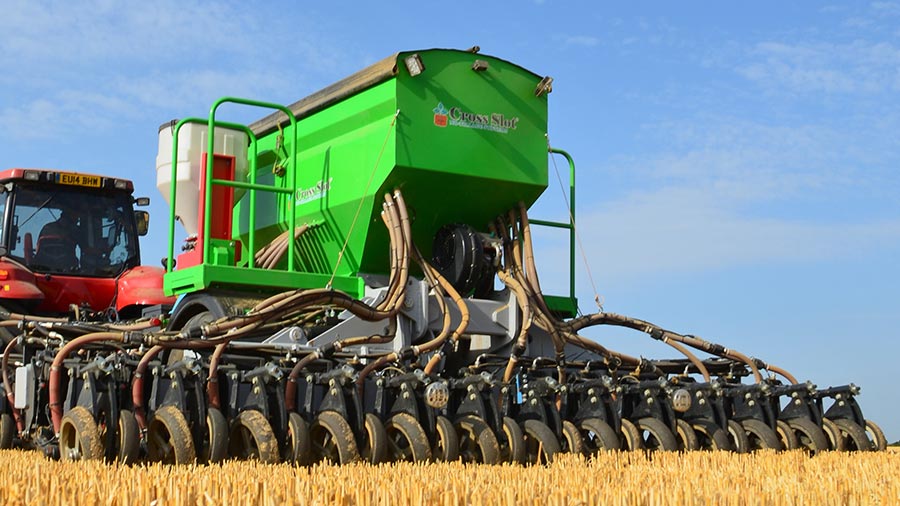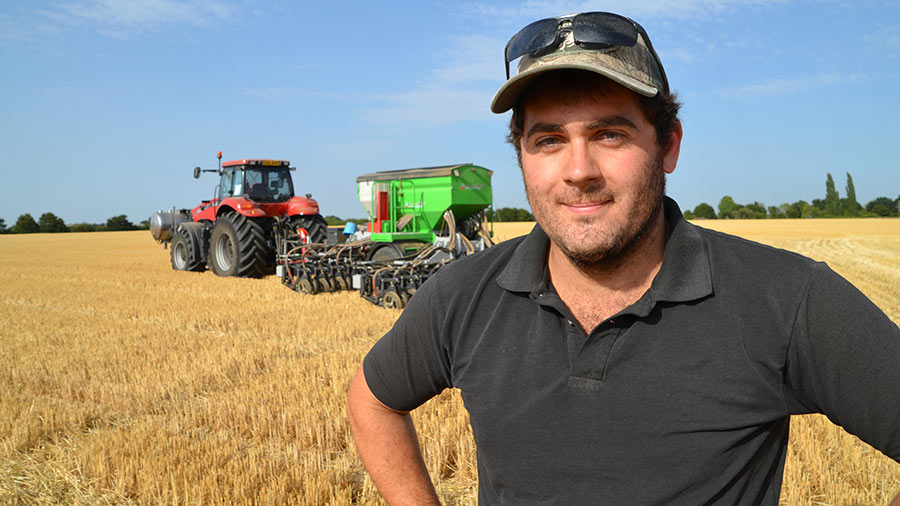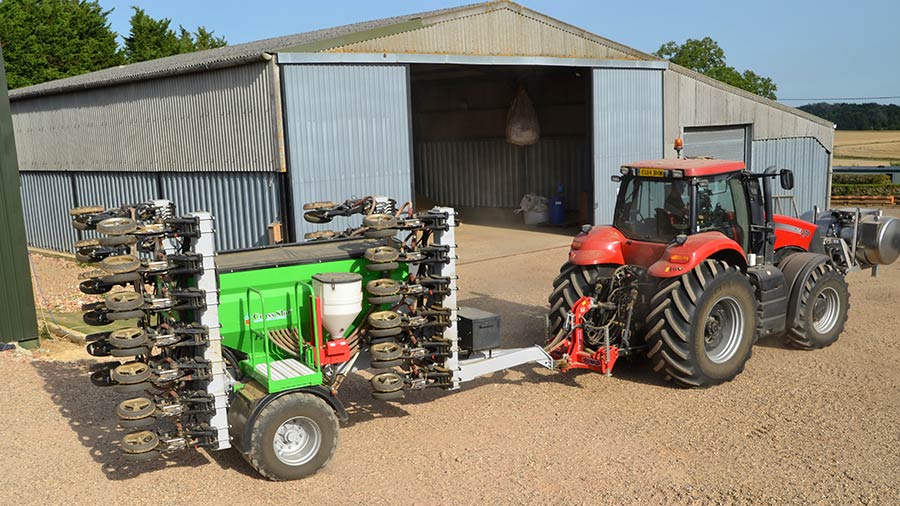Direct drills revisited: 5m Cross Slot still delivering 7 years on
 © Nick Fone
© Nick Fone
Spending £120,000 on a 5m Cross Slot drill has proved a worthwhile investment for Suffolk farmer David Bird.
The aim of switching to the system from a Vaderstad Rapid seven years ago was to improve soil health, cut reliance on chemical inputs and use cover and companion crops to help retain nutrients and reduce weed pressure.
See also: Driver’s view: David Bird’s Primewest Cross Slot
It is delivering on most of these aims, says David. “Our clay loam soils are well suited to direct-drilling and I’ve noticed considerable improvements in structure and organic matter content – it’s definitely becoming easier to make the system work.”
The low-disturbance coulters have also reduced grassweed germination and, coupled with the benefits of leaving seeds on the surface, he’s been able to grow more successive cereals and fewer break crops in the rotation.
“Yields of winter crops have held up well and we’ve been able to reduce artificial fertiliser inputs, although this is the result of the system as a whole, rather than just the drill.”
As a general rule, no other cultivation work is carried out before the drill enters the field.
However, he will occasionally run over stubbles very lightly with a Vaderstad Carrier to encourage weed seeds to germinate.
He also tends to Cambridge roll after drilling, but the fact the Cross Slot’s coulters and press wheels are so effective at covering the seed means he often questions whether it’s necessary.
Slugs haven’t been a significant problem either, apart from in oilseed rape, which needs a close eye kept on it, particularly this season.

David Bird © Nick Fone
Primewest Cross Slot (2016)
- Width/spacing 5m/200mm
- Coulters/max pressure T-slot disc opener/450kg
- Hopper 2,450 litres, plus two 65-litre Stocks Rotor-Meter hoppers and 130-litre Stocks Turbo Jet 8
- Price paid £120,000
Wet conditions a challenge
Wet soils have proved challenging though, and he has been investing in drainage to improve conditions for the drill to work in.
He aims to start drilling winter barley by 20 September and have all cereals crops in by the first week of October to maximise the chance of getting them established well.
If things don’t go to plan, he has a backup Horsch CO6 tine drill fitted with Bourgault coulters that will work in most conditions acceptable for establishing a crop.
Spring cropping has also been a struggle, with the ground going tight and taking a long time to warm up.
Reliability
The drill’s tough construction and excellent build quality mean it is still in good condition and has suffered little in the way of mechanical problems, other than a couple of hydraulic niggles.
Rates at which the tungsten-tipped T-shaped coulters wear varies depending on how hard the ground is, but he can generally get 500-600ha out of them.
After fitting the drill with blockage sensors on each outlet, he had problems with seed tubes sagging and getting pinched as the wings fold. This has now been solved by carefully re-routing the worst offenders.
The Cross Slot is still a power-hungry beast, requiring the services of a 370hp Case Magnum up front, which burns about 13.5-litres/ha of diesel.
This is considerable for a no-till drill, but about a quarter of what he was using with the old Vaderstad system.

© Nick Fone
Multiple seeding options
Another modification has been to add a third Stocks applicator, which can be used to apply Avadex.
Like all of the hoppers, this connects into his Topcon X30 screen so that he can upload an application map that will only apply the product to problem areas.
The other seeders are used for establishing cover and catch crops, as well as companions of buckwheat, clover and mustard stitched into Clearfield oilseed rape.
There are no plans to change the drill anytime soon, but if he does it will either be for the same machine or another no-till disc drill.
Likes and gripes
Likes
- T-shaped slot provides ideal growing conditions
- Accurate seed placement
- Excellent build quality
- Minimal weed seed disturbance
Gripes
- Not great in wet conditions
- Requires a high-horsepower, heavy tractor
- Expensive
- No divide in main hopper

